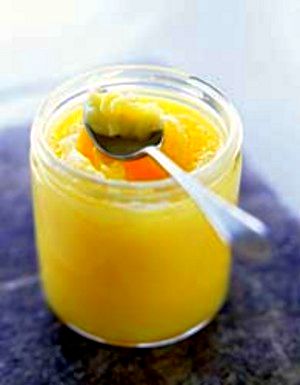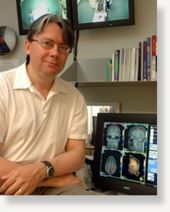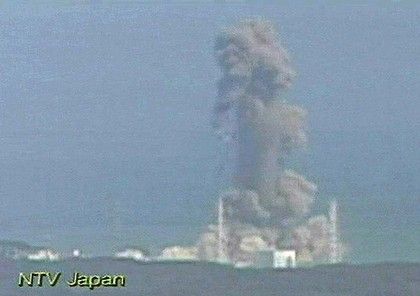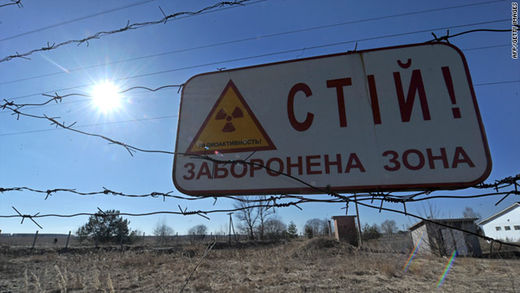Tokyo Water Bureau officials say levels of radioactive iodine in some city tap water is two times the recommended limit for infants.
The officials told reporters Wednesday that a water treatment center in downtown Tokyo that supplies much of the city's tap water found that some water contained 210 becquerels per liter of iodine 131.
They said the limit for consumption of iodine 131 for infants is 100 becquerels per liter. They recommended that babies not be given tap water, although they said the water is not an immediate health risk for adults.
This is a breaking news update. AP's earlier story is below.

Ghee-Clarified Butter
For years, clarified butter has been a part of traditional Indian cuisine but this virtuous cooking medium ran out of favor with fitness experts and nutrition specialists as it is high in saturated fat and cholesterol and often the cause of expanding waistlines and obesity.
However, new trends are now emerging, in a way, reinventing tradition.
Ayurveda experts are backing ghee for its vitamins, longer shelf-life and immunity-boosting qualities.
Comment: The article states 'fitness experts and nutrition specialists state ghee is high in saturated fat and cholesterol and is often the cause of expanding waistlines and obesity.' Read the following article to understand how we have been lied to about the benefits of saturated fats:
The Big Lie: "Saturated Fats Are Bad For You" - from the article:
Nutritionally I can't think of a bigger lie than the one claiming that fats in general and saturated fats in particular are bad for us. This lie is so deeply embedded in the minds of most that you couldn't blow it out with a stick of dynamite. Especially in the minds of academics, and more especially in the minds of most dietitians. Not all, but most. Nutritionally, it is truly the Big Lie.
Saturated Fats benefit overall health and wellness, for more information on the health benefits of saturated fats read the following articles:
7 Reasons to Eat More Saturated Fat
Saturated Fat is Good for You
Higher saturated fat intakes found to be associated with a reduced risk of dying from cardiovascular disease
Saturated Fat and Heart Disease
What if It's All Been a Big Fat Lie?
Why high fat diets are not fattening
Wrongly Convicted? The Case for Saturated FatFrom the article:
Speaking at a press conference this month in Washington, D.C. sponsored by the Healthy Nation Coalition and the Weston A. Price Foundation, Ms. Morell said that for the past 60 or 70 years, saturated fats have been blamed for clogging arteries, and for causing heart disease, diabetes and even multiple sclerosis. Ms. Morell says that none of these accusations is based on sound science. On the other hand, she points out the critical roles that saturated fats play in the body.
In particular, she cites the benefits of saturated fats:
- Make up 50% of cell membranes.
- Help the body put calcium in the bones.
- Lower Lp(a), a marker for heart disease.
- Are the preferred food for the heart.
- Protect the liver from alcohol and other poisons.
- Are required for lung and kidney function.
- Enhance the immune system.
- Work together with essential fatty acids.
- Support the body's detoxification mechanisms

© UnknownPatrick Stroman is working to map the function and information processing of the spinal cord.
Patrick Stroman's work mapping the function and information processing of the spinal cord could improve treatment for spinal cord injuries.
"Basic physiology books describe the spinal cord as a relay system, but it's part of the central nervous system and processes information just like parts of the brain do," explains Dr. Stroman, director of the Queen's MRI Facility and Canada Research Chair in Imaging Physics.
Dr. Stroman's research is directed at precisely mapping the areas above and below a spinal cord injury in order to better determine the precise nature of an injury and the effectiveness of subsequent treatment. When medical research has advanced to a point where clinicians are able to bridge an injury on a spinal cord, Dr. Stroman's spinal mapping technique will be key in accurately pinpointing the injury to be bridged.
The technique involves capturing multiple images of the spinal cord using a conventional MRI system. The image capturing is repeated every few seconds over several minutes. During the imaging temperature sensations on the skin are varied allowing areas of the spinal cord that respond to the temperature changes to be detected in the MRI.

© Thomas Northcut / Photodisk / Thinkstock
Not long ago, researchers studied the heart health of a group of very fit older athletes -- men who had been part of a national or Olympic team in distance running or rowing, and runners who had completed at least a hundred marathons. The results were unsettling -- half of these lifelong athletes showed evidence of heart muscle scarring.
The affected men were invariably the ones who had gone through the longest, hardest training. And now a new study, this time in laboratory rats, provides solid evidence of a direct link between certain kinds of prolonged exercise and heart damage -- scarring and structural changes, similar to those seen in the human endurance athletes.
The research effectively shows that years of strenuous cardiovascular exercise can damage your heart.
According to the
New York Times:
"Unfortunately, it remains impossible, at the moment, to predict just what that threshold is for any given person, and which athletes might be most vulnerable to heart problems as a result of excessive exercise".
Sources:New York Times March 9, 2011The Journal of Applied Physiology February 17, 2011 [Epub Ahead of Print]Circulation 2011;123:13-22
Health Canada monitoring stations detected a "minuscule" increase in radiation levels along the B.C. coast Monday in the wake of the nuclear crisis in Japan.
Health spokesman Gary Holub said increased radiation levels were expected, and he stressed the increase posed no public health risk in Canada.
"As anticipated, the amount of radiation reaching Canada is so small that it would not pose a health risk to Canadians," Holub said in an email response to queries.
"Health Canada's radiation monitoring stations have detected a minuscule increase in radiation levels along the West Coast of Canada. This increase is a variation less than what we would see naturally when it rains."
Health Canada installed nine additional monitoring stations along the Pacific coast late last week, as public concerns persisted about possible radioactive drift from Japan making it thousands of kilometres across the ocean to North America.
Some nervous Canadians were trying to track down their own equipment to assess the threat.
Gabriela Segura, M.D.
Sott.netFri, 18 Mar 2011 06:45 UTC
Foot-dragging in recognizing obvious problems and the resultant delays in preventing exposure and mitigating the effects lies at the door of nuclear power advocates more interested in preserving the status quo than in helping millions of innocent people who are suffering through no fault of their own. - Nesterenko, A. V., Nesterenko, V. B. and Yablokov, Chernobyl: Consequences of the Catastrophe for People and the Environment.

© AP/NTVSmoke ascends from the Fukushima Dai-ichi nuclear plant's Unit 3 on Monday 14 after a second hydrogen explosion.
We have had conflicting reports from mainstream news sources regarding the nuclear emergency in Fukushima, Japan. Some say that it is not nearly as bad as the Chernobyl catastrophe, others say that it will be much worse than Chernobyl. What are we to make of this? Who can we trust?
With the current state of affairs, I think it is reasonable enough to expect and prepare for the worst, hope for the best and take what comes. It is with this state of mind that I set out to review the available literature about accessible and alternative therapies in case of nuclear disasters as well as data about the Chernobyl catastrophe. What I found was shocking enough but know that there is also well-documented essential knowledge that can protect you and your loved ones.
This article includes an overview of the publication
Chernobyl: Consequences of the Catastrophe for People and the Environment which appeared in
Annals of the New York Academy (2009). The authors - Alexey V. Nesterenko (Institute of Radiation Safety (BELRAD), Belarus) and Alexey V. Yablokov (Russian Academy of Sciences) along with Vassily B. Nesterenko - synthesized information from several thousand cited scientific papers and other materials, including successful and widely available natural therapies that worked. There are also other numerous studies about alternative effective treatments in case of radiation. It will give you a clear idea of what to expect and what you can do in case of a nuclear disaster in Japan.
This is a matter that concerns all of us as no country in the world is capable of providing complete protection from radiation for those living in affected areas and from eating locally grown foods that are contaminated with radiation.

© The Register-Guard
Sales of organic foods have climbed for the past decade, outpacing the growth of their conventional counterparts, as consumers paid a premium for food they saw as safer, higher quality and more environmentally friendly.
But at the same time demand for organics was growing, some of the companies producing organic food were quietly reducing their use of organic ingredients. This happened for a variety of reasons, including rising commodity prices and, in some cases, new corporate parents strongly rooted in conventional food processing.
The switch from organic to nonorganic ingredients hasn't always been apparent to customers - or even to the retailers selling them.
In the most recent case to come to light, many consumers across the country have been scooping Golden Temple granola from bulk bins and buying boxes of Peace Cereal thinking the products are made with mostly organic ingredients, when they haven't been for years, according to an organic foods industry watchdog group.

© Unknown
When it comes to your health, there is one factor that is more important than almost any other...
If it is missing from your life, it causes or worsens 95 percent of all illness. It has been associated with dramatic reductions in disease and increased longevity.
And it is more important than
cholesterol, blood sugar, blood pressure, or any other risk factor in determining whether you will live a long and healthy life. But it doesn't come in a pill, and it can't be found in a hospital or in your doctor's office.
What is this critical factor that determines so much about how healthy or how sick you are?
Your attitude, your social networks, your community, and your spiritual beliefs.
Put another way, the health of your mind and spirit and your sense of connection to your community has an immense impact on the health of your body. In fact, aside from eating breakfast, the biggest predictor of longevity is psychological resiliency - being able to roll with the punches that life throws at us.
Comment: There is one
proven technique that can assist you with reducing your stress, calming and focusing your mind, creating better links between body and mind and thus improving quality of life, increasing sense of connection with others in your community. It will help you to have improved overall health, a stronger immune system, better impulse control, reduced inflammation, etc. It will also help you to heal emotional wounds; anything that may hinder or prevent you from leading a healthy and fulfilling life.
The
Éiriú Eolas technique grew out of research conducted by the Quantum Future Group under the direction of Laura Knight-Jadczyk and Gabriela Segura, M.D. The practice has been thoroughly researched and proven to work by the thousands of people who are already benefiting from this unique program. The effects are cumulative and results and benefits can be seen in only a very short time, sometimes after just one session!
There is a myriad of relaxation techniques out there, but not many of them can attest to having not only immediate effects, but also having a highly practical application. With
Éiriú Eolas, there is no need to sit in special postures, or be present in a carefully prepared relaxing atmosphere. The strength of the program comes from its high adaptability to stressful conditions of the modern world. Anyone can do it, be it a student, sitting outside of a lecture hall before the exam, a mechanic needing a break from tackling problems all day, a businessman just before signing an important deal, a mother having to raise three children and worrying if she will have enough money to pay the mortgage, etc.
Visit the
Éiriú Eolas site or participate on the
forum to learn more about the scientific background of this program and then try it out for yourselves, free of charge.
Thom Patterson
CNNMon, 21 Mar 2011 06:45 UTC

© UnknownOnly Chernobyl and the atomic bombing of Hiroshima and Nagasaki have provided definitive information on the effect of radiation.
Japan's alarm over radiation found in spinach and milk has also raised questions, given that little is known about its effect on the human body.
While some tests have been done on animals, sparse information is available on how eating contaminated food affects people in the short and long term.
The main reason is the lack of research subjects, limited to those affected by the 1945 nuclear attacks on the Japanese cities of Nagasaki and Hiroshima and the 1986 Chernobyl nuclear plant disaster in the Ukraine, then a part of the Soviet Union.
But now Japan is looking for answers, all part of the ripple effect from the March 11 mammoth earthquake and subsequent tsunami that wreaked havoc on the Fukushima Daiichi nuclear power plant's six reactors and led to the release of unknown quantities of radioactive vapors.
On Sunday Japanese authorities slapped restrictions on milk and spinach that tested positive for radioactive cesium-137 and iodine-131 isotopes. In addition to the spinach and milk, very small amounts of radioactive iodine have been detected in tap water near the plant.
Because it's called fat, it makes sense and is intuitive to believe that fat is fattening. It's also rich in calories compared to carbohydrate or protein. The thing is, though, the evidence does not strongly link fat-eating with obesity, and eating low-fat diets are, on the whole, spectacularly ineffective for the purposes of weight loss. Never mind what common sense may dictate, taken as a whole the evidence suggests fat is not particularly fattening after all.
To understand how this can be it helps to understand a little about what influences the accumulation of fat in the fat cells. One key player here is the hormone insulin. This hormone predisposes the body to fatty accumulation through a variety of mechanisms, including enhanced uptake of fat into the fat cells (through activation of the enzyme lipoprotein lipase) and suppression of fat release (by inhibiting the enzyme hormone-sensitive lipase). Here's the thing: fat does not stimulate insulin secretion directly. Is it possibly then that someone could eat a diet of nothing but fat and lose weight, even if they were not in calorie deficit?
This concept may sound far-fetched to some, but there is some evidence for it. One piece of evidence comes in the form of a study in which individuals, on separate occasions, were allowed no food or fed with fat into a vein.



Comment: The article states 'fitness experts and nutrition specialists state ghee is high in saturated fat and cholesterol and is often the cause of expanding waistlines and obesity.' Read the following article to understand how we have been lied to about the benefits of saturated fats: The Big Lie: "Saturated Fats Are Bad For You" - from the article: Saturated Fats benefit overall health and wellness, for more information on the health benefits of saturated fats read the following articles:
7 Reasons to Eat More Saturated Fat
Saturated Fat is Good for You
Higher saturated fat intakes found to be associated with a reduced risk of dying from cardiovascular disease
Saturated Fat and Heart Disease
What if It's All Been a Big Fat Lie?
Why high fat diets are not fattening
Wrongly Convicted? The Case for Saturated Fat
From the article: